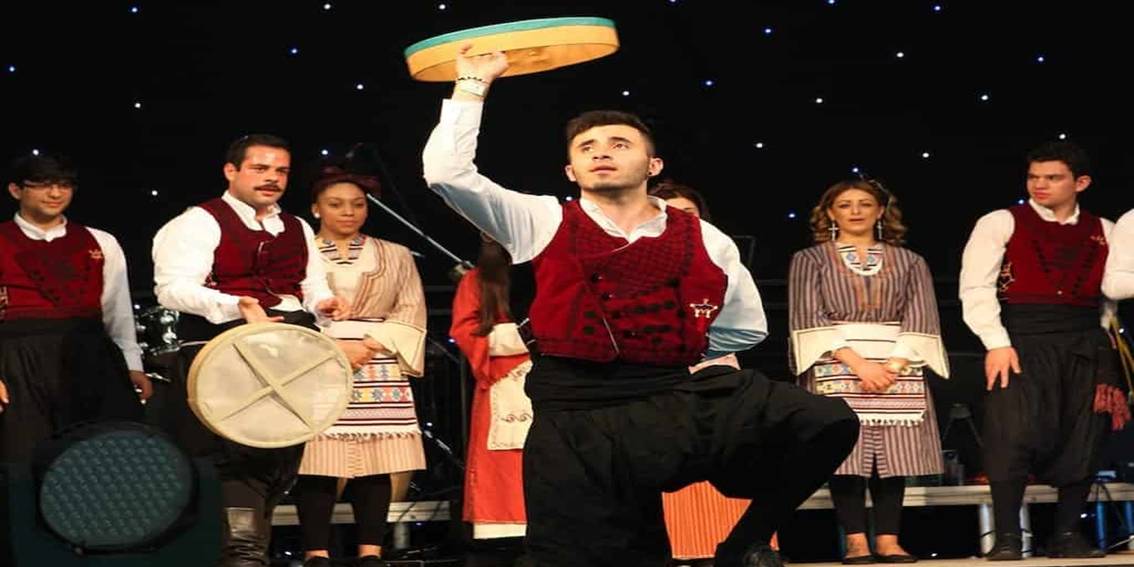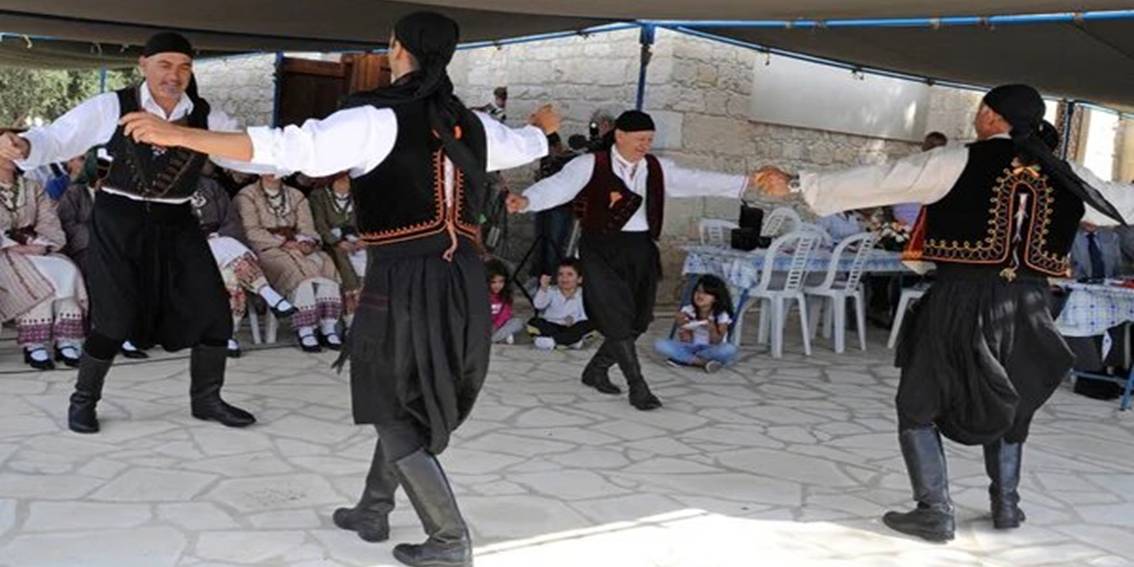A Traditional Folk Dance from Cyprus
The Cyprus Syrtaki dance, often associated with Greece, holds a special place in Cypriot culture as well. Although many people think of it as Greek due to its famous appearance in the 1964 film Zorba the Greek, the dance has a strong presence in Cyprus, where it brings people together in joyous celebrations. This dynamic and highly energetic dance reflects both the history and the cultural vibrancy of Cyprus. With roots in both Greek and Cypriot traditions, the Syrtaki encapsulates the spirit of community, tradition, and vitality in both island nations.
The origins of the Cypriot Syrtaki Dance represent an interesting blend of traditional and modern elements. Created in the early 1960s, the Syrtaki took inspiration from older Greek folk dances, particularly the “hasapiko.” While the hasapiko, a slower and more deliberate dance, dates back to the Middle Ages and originally came from Byzantine times, the Syrtaki evolved into something more approachable. By incorporating both slow and fast movements, the Syrtaki adapted itself to the rhythm of modern life, making it accessible and exciting for dancers of all levels.
A Greek Dance for Cyprus and Greece
Cypriots embraced this dance wholeheartedly, seeing it as a bridge between their own folk dances and the wider Hellenic world. They appreciate how the dance combines the elegance of slower movements with the joy and exuberance of faster steps. On the island of Cyprus, the Cypriot Syrtaki Dance has become an essential part of community gatherings, festivals, and social events. The dance not only entertains but also fosters a sense of unity and shared identity, which is particularly important in a place like Cyprus, where history has often divided communities.
Performing the Syrtaki in Cyprus, as in Greece, typically involves dancers forming a line or a semicircle with their arms linked at the shoulders. The dance starts slowly, with each dancer stepping in sync to the gentle rhythm of the music. In this initial phase, dancers focus on precision and control, taking deliberate steps while moving their feet in patterns that echo older, traditional folk dances. The group moves as one, with no single person dominating the scene. This choreography represents the importance of collective effort and harmony in Cypriot and Greek cultures.
As the dance progresses, the tempo of the music increases. The dancers’ movements become more vigorous and lively. This shift from slow to fast symbolizes the human experience, moving from a state of calm to one of excitement and even euphoria. By the end of the dance, the pace becomes frenetic, with high kicks, spins, and leaps defining the performance. The transition feels almost seamless, but the contrast between the slow, measured opening steps and the fast, energetic closing moves makes Syrtaki an unforgettable experience.
The Importance of the Music
The music accompanying the Syrtaki dance is equally important. Bouzouki, a traditional string instrument, provides the signature sound for the dance. Other instruments such as the guitar and the lyra add to the music’s richness. In Cyprus, musicians sometimes incorporate their own folk instruments like the “laouto,” a long-necked lute, which deepens the Cypriot connection to the dance. This blending of musical traditions emphasizes how the Syrtaki can be adapted while still retaining its core structure, allowing for regional variations to flourish within a shared cultural framework.

A Dance for Entertainment
Syrtaki is not just a dance for performance or entertainment. In Cyprus, it plays a key role in social bonding. During weddings, christenings, and village celebrations, Cypriots perform Syrtaki to celebrate togetherness and joy. The dance provides an opportunity for people of all ages and backgrounds to come together. A simple wedding becomes a community affair when the guests join hands and perform the Syrtaki. This shared activity builds bridges between generations and different social groups, reinforcing the communal aspect of Cypriot life.
A Dance with Therapeutic Aspect
In addition, Syrtaki has a therapeutic aspect. The rhythm of the dance, particularly the slow beginning, allows dancers to centre themselves and find balance. As the music picks up and the tempo increases, the dance releases pent-up energy, leading to a sense of liberation. For many Cypriots, participating in this dance brings a release from the stresses of daily life. In a culture where community and emotional expression are deeply valued, the Syrtaki offers a way to process feelings through movement.
A Simple of Resilience
Many Cypriots also see the Syrtaki as a symbol of resilience. The gradual build-up from slow to fast, calm to frenetic, mirrors the challenges and triumphs that life presents. Cyprus has experienced many difficult periods, including conflicts, invasions, and economic hardships. Yet, much like the dancers in a Syrtaki, the Cypriot people rise together, gaining momentum from each other’s strength and spirit. The final, fast-paced section of the dance serves as a reminder of the vibrant energy and optimism that persists despite hardships.
Learning the Syrtaki
Learning the Syrtaki in Cyprus often starts young, with many children being taught the basic steps at school or by older family members. This early exposure helps keep the tradition alive, as young people continue to pass it on to future generations. Additionally, Syrtaki has found its way into the tourism sector in Cyprus. Tourists who visit the island often get to participate in Syrtaki dance events, making it not just a local tradition, but a cultural export that represents the island’s spirit to the world. Tourists find themselves drawn into the infectious joy of the dance, taking part in an authentic cultural experience that bridges borders.
Conclusion
In conclusion, the Syrtaki dance, though originally associated with Greece, holds significant meaning in Cyprus. Its combination of slow and fast movements, communal spirit, and musical accompaniment make it a powerful symbol of Cypriot culture. Whether in village squares, wedding celebrations, or tourist events, the Syrtaki represents a beautiful fusion of tradition and modernity. Its unifying power and joyful expression resonate deeply with the people of Cyprus, reflecting their values of resilience, community, and joy.




